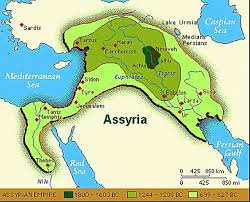Mesopotamia
6. The Assyrian Empire
6.1. Old Kingdom
Although the city of Ashur existed from the 3rd millennium BCE, the extant ruins of that city date to 1900 BCE which is now considered the date the city was founded. According to early inscriptions, the first king was Tudiya, and those who followed him were known as “kings who lived in tents” suggesting a pastoral, rather than urban, community.
Ashur was certainly an important center of commerce even at this time, however, even though its precise form and structure is unclear. The king Erishum I built the temple of Ashur on the site in c. 1900/1905 BCE and this has come to be the accepted date for the founding of an actual city on the site although, obviously, some form of city must have existed there prior to that date.
The trade colony of Karum Kanesh (the Port of Kanesh) was among the most lucrative centers for trade in the ancient Near East and definitely the most important for the city of Ashur. Merchants from Ashur traveled to Kanesh, set up businesses, and then, after placing trusted employees (usually family members) in charge, returned to Ashur and supervised their business dealings from there.
The Rise of Ashur
The wealth generated from trade in Karum Kanesh provided the people of Ashur with the stability and security necessary for the expansion of the city and so laid the foundation for the rise of the empire. Trade with Anatolia was equally important in providing the Assyrians with raw materials from which they were able to perfect the craft of iron working. The iron weapons of the Assyrian military would prove a decisive advantage in the campaigns which would conquer the entire region of the Near East. Before that could happen, however, the political landscape needed to change.

soon after Hammurabi’s death in 1750 BCE, the Babylonian Empire fell apart. Assyria again attempted to assert control over the region surrounding Ashur but it seems as though the kings of this period were not up to the task. Civil war broke out in the region, and stability was not regained until the reign of the Assyrian king Adasi (c. 1726-1691 BCE). Adasi was able to secure the region and his successors continued his policies but were unable or unwilling to engage in the expansion of the kingdom.